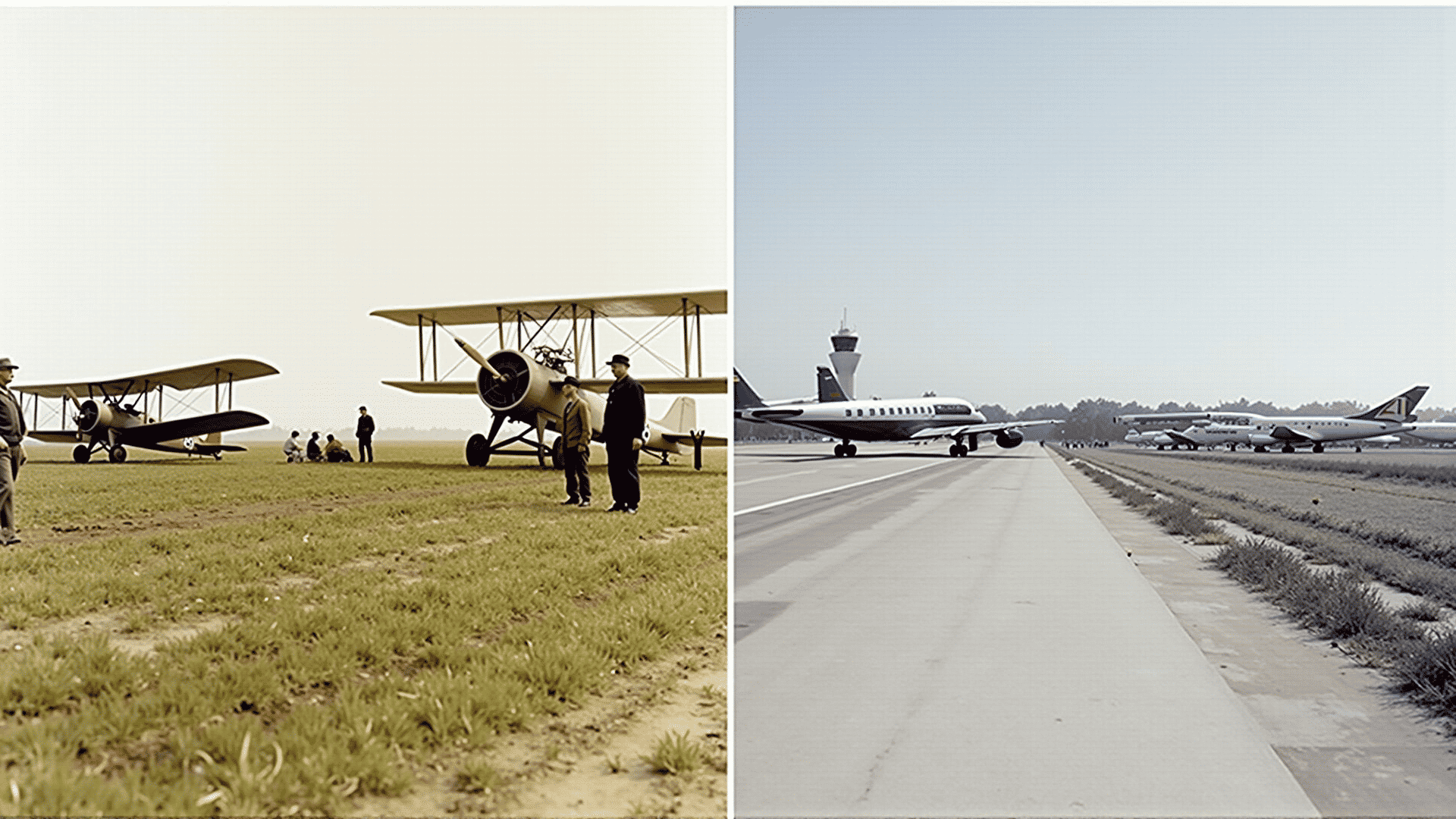The evolution of aerodromes is a fascinating journey that mirrors the progress of aviation as a whole. From the humble beginnings of rudimentary airstrips to the development of complex aviation hubs that serve millions of travelers each year, aerodromes have played a central role in the advancement of air travel and technology.
In the early days of flight, shortly after the Wright brothers' first powered flight in 1903, airstrips were little more than flat, open fields. These early sites were selected for their accessibility and lack of obstacles, allowing pilots to take off and land safely. These basic strips were often located near towns, giving early aviation enthusiasts a chance to witness the marvel of flight.
As aircraft technology advanced and World War I highlighted the strategic importance of air capabilities, nations began to invest in more sophisticated facilities. During this period, military airfields began to emerge, featuring dedicated runways, hangars, and rudimentary control towers. These developments set the foundation for the post-war transformation of airstrips into organized facilities.
The interwar period saw the establishment of the first structured civil aerodromes, with dedicated passenger terminals and scheduled services. This era marked the transition from experimental aviation to a recognized mode of transport, with aerodromes serving as gateways to the skies. The growth of commercial flight in the 1930s further drove the expansion and modernization of these sites, incorporating paved runways and increased safety measures.
World War II catalyzed another leap forward, as airfields were rapidly constructed with advanced features to support military operations. The pressure of war resulted in innovations such as improved navigation aids and expanded ground services, which later benefited civil aviation in peacetime. After the conflict ended, many military airfields were converted for civilian use, significantly increasing the global network of aerodromes.
The post-war boom in aviation saw the dawn of the jet age, requiring significant aerodrome upgrades to accommodate larger and faster aircraft. The 1960s and 1970s marked an era of massive construction, with sprawling international airports designed to handle the growing demand for air travel. Key features introduced during this period included multiple runways, elaborate terminal buildings, and sophisticated air traffic control systems.
In the contemporary era, aerodromes have evolved into major hubs of global connectivity. Equipped with state-of-the-art technology, modern aviation hubs offer a seamless travel experience, with features such as automated check-in processes, advanced security measures, and extensive passenger amenities. Environmental considerations have also become increasingly important, prompting the adoption of sustainable practices and the development of eco-friendly infrastructure.
Throughout their history, aerodromes have not only facilitated the movement of people and goods across distances but have also driven economic growth and cultural exchange. As we look to the future, the continued evolution of aerodromes will undoubtedly play a crucial role in shaping the next chapter of air travel, enabling innovations in aircraft technology and further connecting our world.
